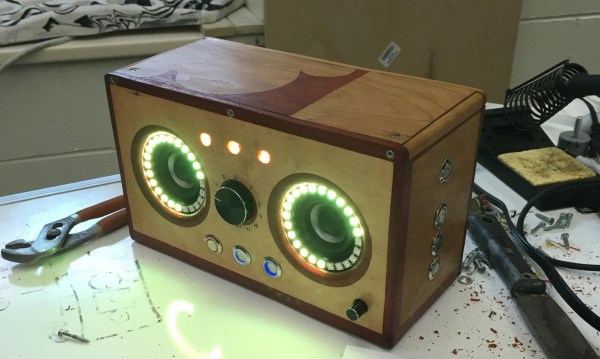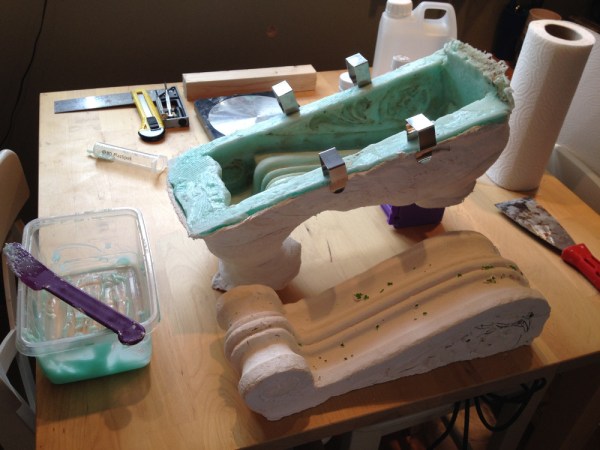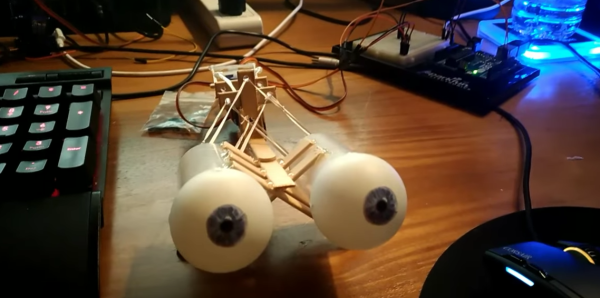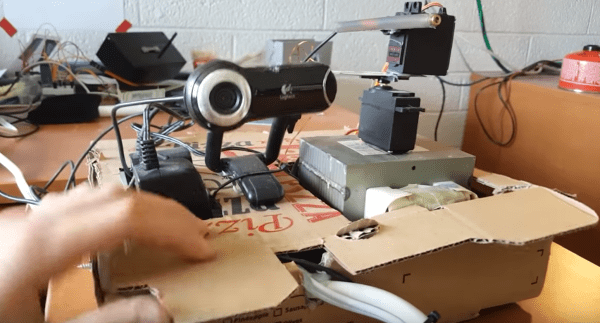[IanMeyer123] should be working on his senior design project. Instead, he’s created a sound-reactive Bluetooth speaker that may not earn him an A grade but will at least keep the team entertained.
[Ian] started with the amp and power. The amp is a 15 watt, 12 volt model based on the popular TDA7297 chip. Power comes from a portable laptop battery rated at 185 Wh. [Ian] himself said that is absolute overkill for this project. While [Ian] hasn’t run any longevity tests on his setup, we’re guesstimating it would be rated in days.
Every Bluetooth speaker needs a sweet light show, right? [Ian] wrapped his 2″ full range speakers in Neopixel rings from Adafriut. The WS2812’s are driven by an Arduino. When music is playing, MSGEQ7 allows the Arduino to play a light show in time to the beat. When the stereo is off, a DS3231 real-time clock module allows the Arduino to display the time on the two rings. If you’re curious about the code for this project, [Ian] posted it on his Reddit thread. Reddit isn’t exactly a great code repository, so please, [Ian] setup a GitHub account, and/or drop your project on Hackaday.io!
[Ian] didn’t realize how many wires would be flying around inside the speaker. That may be why the wiring looks a bit scary. All the chaos is hidden away, underneath a well-built wooden case.
If you want to see another take on a Bluetooth speaker with a Neopixel display, check [Peter’s] project here. Interested in more portable power units? This one’s for you!
Continue reading “Portable Bluetooth Speaker Reacts To Sound”

















